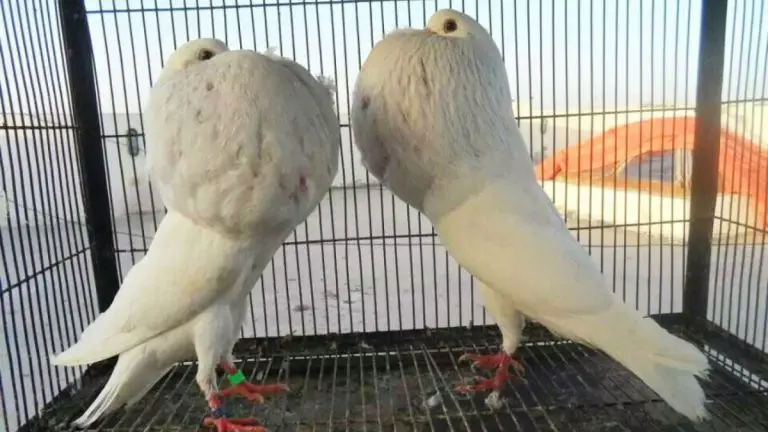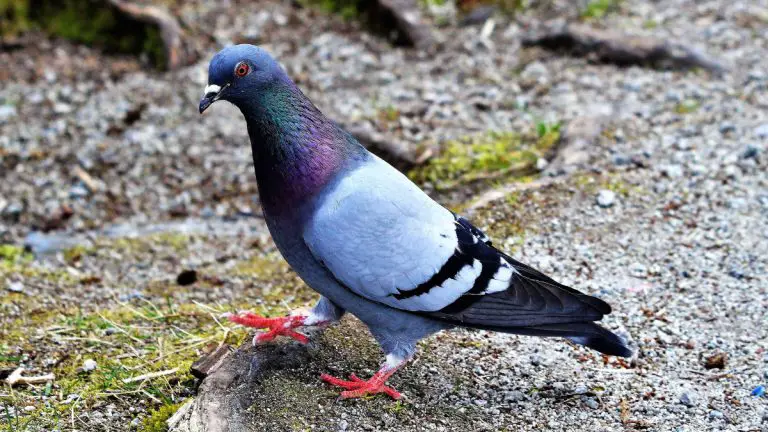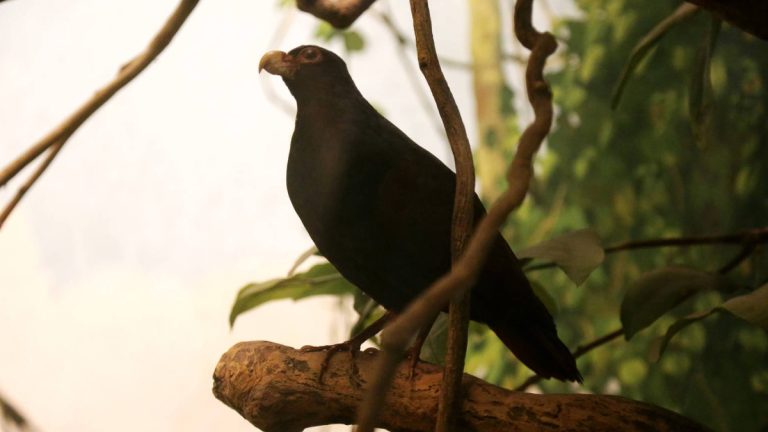Old German Owl Pigeon: Origin, Appearance, Behavior, Care, And More
The old German owl is a fancy breed of domesticated pigeon popular for its beauty and elegance. Its large, round eyes set in a prominent position on its head add to its overall elegance. The bird is generally calm and gentle which makes many pigeon fanciers interested in keeping it as a pet.
This article discusses full details about the old German owl pigeon. You’ll discover interesting facts such as the bird’s origin and history, physical description, behavior and temperament, suitability as a pet, and how to take good care of this pigeon in terms of diet, housing, health care, and more.
Old German Owl Pigeon Quick Facts:
| Scientific name | Columba livia domestica |
| Other names | Altdeutsches Mövchen(German) |
| Breed name | Old German Owl |
| Origin | Germany |
| Breed purpose | Exhibition, ornamental, pet |
| Size | Small to medium |
| Weight | 280 to 360 grams |
| Flying ability | Good |
| Cost | $50 to several hundred dollars |
| Lifespan | Around 10 years |
Origin and history
The Old German owl originates from Germany. The breed itself is the originator of the short-faced breed of German shied owls.
When it was first bred in Germany, this pigeon was named Mövchen (which means little gull) because its markings and colorations look like the silver gull.
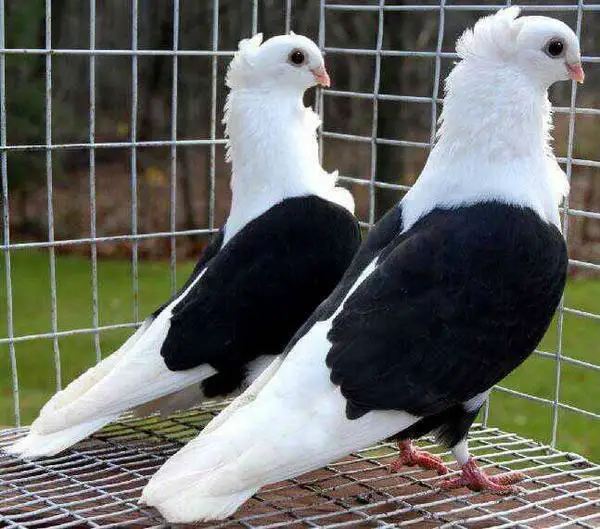
Note that this pigeon became formally recognized again in Germany around 1956.
However, its official standard breed was adopted in Europe in 1960 and by America’s National Pigeon Association in 1999.
Today, this bird is widely used as an ornamental and exhibition bird
Appearance
It can be difficult to tell an old German pigeon from other pigeon breeds if you don’t have an idea of what it looks like. So, let’s here’s a detailed physical description of the bird.
A typical old German owl pigeon is medium-sized and has an average body height of around 25cm and an average body weight of 280 to 360 grams for a mature bird.
Its head is small and almost round, and it features a distinctive crown or feathers at the top. Its eyes are large and round, and appear brown or dark red in color.
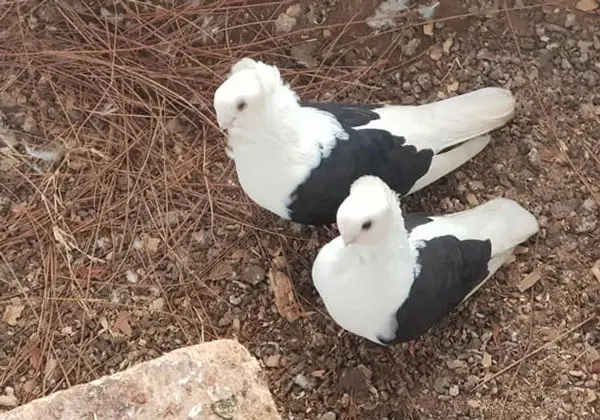
The bird has a short, slightly curved beak that’s usually white or pink in color.
It has a short and stocky neck that sits slanted slightly upright and backward. The breasts appear bold and well-rounded while being prominently held forward.
Legs and feet are slender and short and feature a white or pale pink color. The feet are pretty small and delicate.
Feathers are usually smooth and silky and feature a single solid color (or sometimes they feature a bar or checked pattern).
The tail is quite short and usually carried higher in these birds.
Like the other breeds of domesticated pigeons, this breed also comes in a wide selection of colors and patterns.
The most common old German owl colors include white, blue, red, black, and silver
We found this amazing video that gives you a clear glimpse of what an old German pigeon looks like.
Video:
Behavior
The old German owl pigeon is known for its calm and docile nature—a characteristic that qualifies it for keeping a pet.
It also has a good temperament and doesn’t turn aggressive toward fellow pigeons or its owner.
The bird is also quite active. It tends to become more active and friendly by copying other pet birds housed in the same loft.
The bird is also known for its high intelligence, which further makes them easy to handle for pet owners.
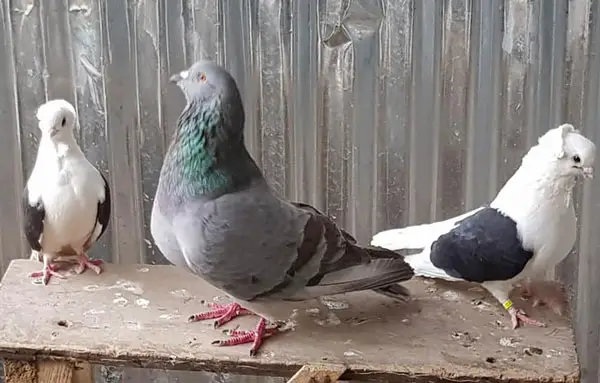
Diet
The pigeon’s diet is similar to that of other birds in that it’s primarily made of seeds and grains.
You can simply get commercial birdseed for your parrot or you can mix up seeds including safflower seeds which the pigeons love.
However, you should also supplement the bird’s diet with veggies to ensure it acquires useful nutrients its body requires to stay healthy.
Regarding the feeding frequency, we advise you to feed your pigeon only two times a day. Give it as much food as it can take in about 20 minutes each feeding session.
As pets
The old German owl pigeon makes a suitable pet bird. It is not only beautiful but is also calm and docile and will relate well with you and your flock of other birds.
The bird is also easy to care for and doesn’t require a lot of effort to maintain. However, there are certain care tips you need to keep in mind if you want to keep your birds happy and healthy at all times.
You should provide your bird with suitable housing that’s spacious and well-ventilated. Make sure it’s safe from harsh weather elements, and predators.

And ensure you clean it regularly to keep away diseases causing bacteria, viruses, etc.
You’ll also need to provide your bird with a nutritious diet (discussed above) in addition to fresh and clean water every day.
Grit is also recommended for pigeons in general as it aids in digestion while supplementing their mineral intake.
Other helpful tips for taking care of your pigeon include giving it companionship of other birds, providing it opportunities for regular exercises, and scheduling regular checkups for your birds by an experienced veterinarian.
If you notice any health issues in your pigeon such as lethargy, loss of appetite, etc., you should also consult your vet immediately!
Breeding
The breeding process in old German owl pigeons is nothing out of ordinary compared to other common breeds of domesticated pigeons.
The process simply starts with a mating pair. If you want specific qualities in your baby pigeons, you’d want to be careful with the pair you choose.
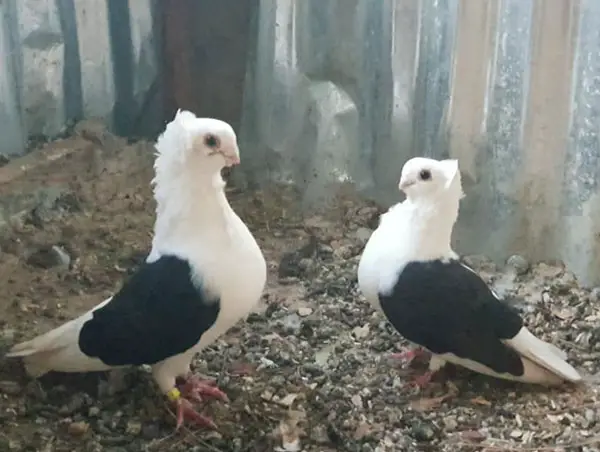
These pigeons are generally good parents, so they’ll take good care of their offspring until they become old enough to feed on their own. This is the reason why many breeders use them as foster parents for other breeds’ eggs.
However, we advise you not to breed your pigeons more than 3 times a year to avoid stressing them. Similarly, making them foster parents more than 3 times a year isn’t recommended.
Price
The cost of an old German owl pigeon can vary from $50 to several hundred dollars. The price variations are usually caused by factors such as the breed quality, pedigree, and breeder.
High-quality birds specifically bred with desired features for shows/exhibitions usually cost higher than birds bred for use as pets. If you’re in an area with fewer breeders and high demand for this bird, you’ll also likely pay more.
Some birds from certain pedigrees or bloodlines that have track records of success in shows will cost more the simple fact that their offspring are likely to show similar traits.
Reputable and experienced breeders that are known for producing high-quality pigeons with good health will also charge more for their birds.
Lifespan
The average lifespan of old German owl pigeon is around 10 years, which is similar to that of other domesticated pigeons.
Some birds may last even longer depending on the care and attention you give them.
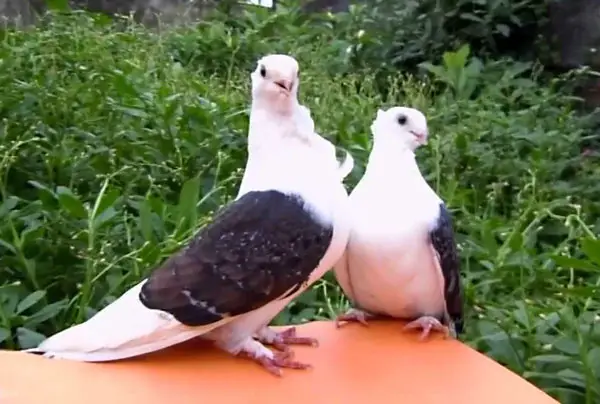
Keep in mind that your pigeons’ life can be cut short by factors such as feeding it poor nutrition, poor living conditions, genetics, and overall poor care.
So, make sure you provide your bird with proper nutrition and suitable living conditions to help maximize its lifespan.
Regular exercising and routine vet care are additional tips for adding quality to your bird’s life expectancy.
If you’re a pigeon enthusiast, you might be interested in our articles on Victoria Crown pigeons and Serbian Highflyer pigeons. Our article on Victoria Crown pigeons provides an in-depth look at these stunning birds, including their unique features, habitat, and conservation status, as well as tips on how to care for and breed them. Meanwhile, our article on Serbian Highflyer pigeons explores the breed’s history, characteristics, and care, including tips on feeding and housing. Don’t forget to also check out our article on Old German Owl pigeons for more information on this fascinating breed.Final Verdict
The old German owl pigeon is one of Germany’s finest breeds of domesticated fancy pigeons. It has a beautiful and elegant appearance that makes it a top-rated breed in exhibitions in Germany and other parts of the globe. Its unique head feathers that form a crown are the top distinctive feature that makes it a popular show bird.
The pigeon is favored by bird fanciers as a pet due to its calm and docile nature. If you wish to keep this bird as a pet, ensure you give it the best care as discussed in the above guide. Good care keeps your bird in good shape and extends its lifespan to 10 years or more.


